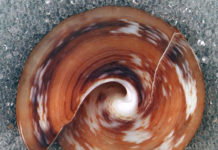Mexico and smuggled across the Southwest border. The report also stated that meth distribution and abuse “significantly contribute to violent and property crime rates in the United States,” and that cocaine distributors and users seek out meth as an alternative as cocaine availability levels decline. “Methamphetamine reports to the National Forensic Laboratory Information System (NFLIS) increased 14.8 percent between 2012 (180,187 reports) and 2013 (206,784 reports),” the 2015 report stated. “In addition, methamphetamine reports increased significantly—53.3 percent—since 2009 (134,891 reports).”
Although the bust may have slowed drug trafficking down, Shroba said that “what concerns us, I think, is who may come in and fill that time-space.” How the meth made its way from Mexico to St. Louis is currently unknown.
In 2015, Missouri lost its title as the meth capital of the United States after a 10-year run. The state now stands at No. 3, behind Tennessee and Indiana.
Meth is a stimulant that usually takes the form of a white, bitter-tasting crystalline powder. It’s classified as a Schedule II stimulant and is taken orally, snorted, smoked, or injected after being dissolved in water or alcohol. The National Institute on Drug Abuse stated in 2014 that meth use increases the use of contracting disease including HIV and hepatitis B, and C. In addition, it can also worsen the progression of HIV/AIDS.
















